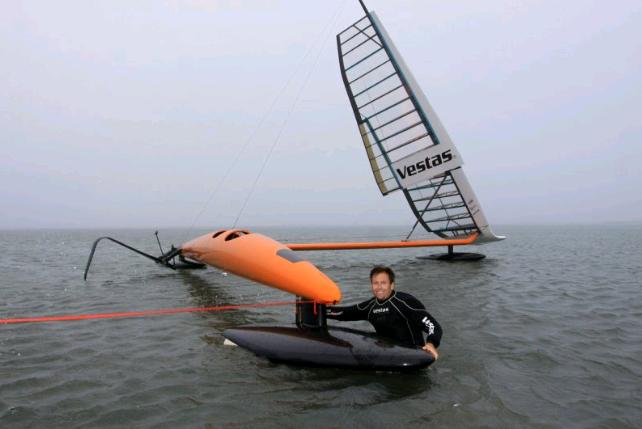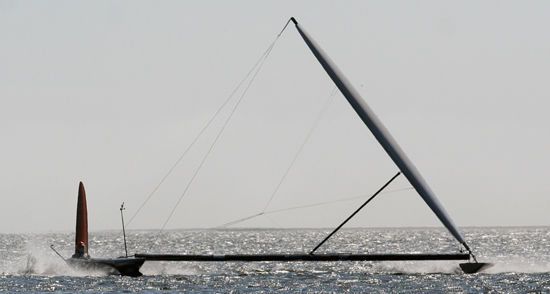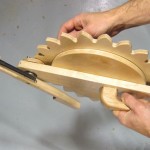“Since the invention of aircraft, a similarity has been noticed between the operation of sails on boats and the function of wings of aircraft. Sails on boats provide thrust in a horizontal direction derived from moving air, and wings on aircraft provide ‘lift’ in a vertical direction to support a plane in the air, also from moving air (relative to the plane). In order to fly, wings had to have a certain degree of efficiency, and some experimenters have realised now that aircraft-type wings could be used on a boat and would be more efficient than sails.”
“Having tested wings on boats in place of sails (‘wingsails’) designers noticed another feature used on aircraft that would be useful to use in conjunction with wingsails – controlling the wingsail with another smaller surface mounted behind or in front of it (a ‘tail’). There are many examples of tails used to control the direction of bodies both in the water and in the air, and aircraft use them to adjust, to a precise degree, the lift or (angle of attack) of their wings.”
“If a tail is used attached to a boats’ wingsail, it can adjust the wing perfectly to every small change of wing direction, in this way relieving the sailor of this task, which is mostly guesswork and at best very approximate, and it can perform that job much better than any sailor can do. Such a wingsail/tail combination is referred to as a self-trimming wingsail.”







